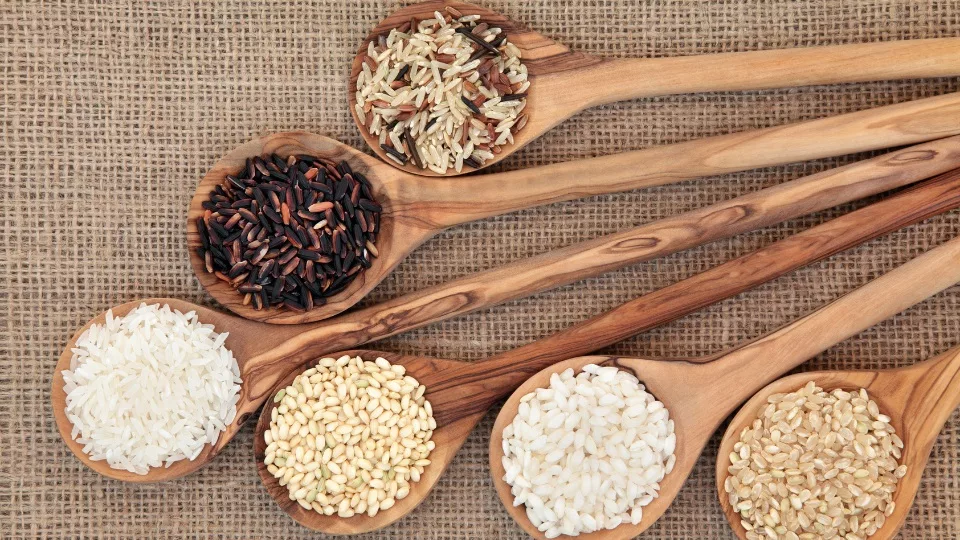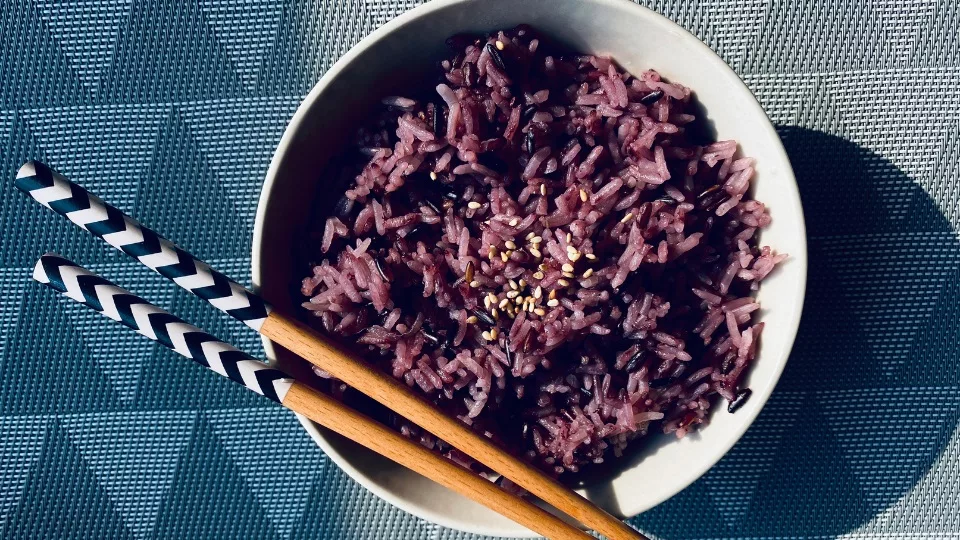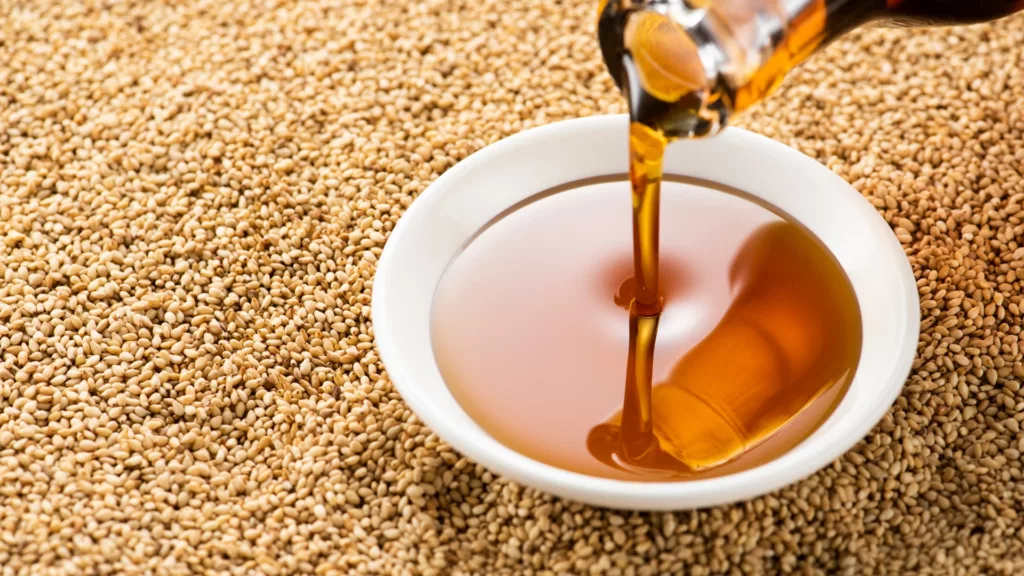Korean cuisine is well-known for its flavorful ingredients, aromatic spices, and historical significance. Rice is the foundation of practically every Korean meal. Rice is unquestionably the hero of Korean culinary tales, from the snowy white grains that accompany Kimchi to the foundation of the worldwide beloved Bibimbap. In today’s deep dive, we’ll reveal the secrets of this fundamental grain, from the most well-known Korean rice brands to the subtleties of Korean purple rice. If you’ve ever wondered about the different types of Korean rice or the greatest rice flavors, you’re in for a treat!
Korean Rice Has Many Faces
Korean rice isn’t a one-size-fits-all product. Korea, like the different pasta types in Italian cuisine, has a plethora of rice types:
White rice (밥, bap): A traditional short-grain staple that cooks gently and slightly sticky.
Korean Purple Rice: A mixture of black rice(Heukmi, 흑미) and white rice(Baekmi, 백미) that produces a stunning purple tint when cooked. It’s not only visually pleasing, but it’s also high in antioxidants.
Germinated brown rice(Hyunmi,현미) is a healthier option to white rice due to its nutty flavor and stronger texture.
Reading Food Labels: What to Look For
- Production Date
Opt for Freshly Harvested Rice: When it comes to rice, the fresher, the better. Freshly harvested rice, often referred to as ‘Haepssal’ in Korean, has high moisture content and strong stickiness, which contribute to its delicious taste. On the other hand, older rice tends to lose its moisture, becoming less sticky and potentially losing some nutrients. Therefore, always check the production year and opt for the most recent harvest.
- Milling Date
Freshly Milled Rice Tastes Better : Milling date matters when it comes to rice. Freshly milled rice retains more moisture, which translates to better-tasting rice. Typically, rice tastes best when cooked within two weeks of milling. Since the milling date can often be more crucial than the production date in determining rice quality, make sure to check this when making a purchase.
Highlighted White Rice Varieties
- Chuchung Rice
Originating from Japan, this rice variety has small and firm grains. It is also high in stickiness and oil content, perfect for sushi and other sticky rice dishes.
- Shindongjin Rice
This rice is characterized by its large grains, low moisture, and protein content. It’s particularly good for people who prefer less sticky rice.
- Odae Rice
The first quality-certified rice in Korea, Odae rice is known for its longevity post-cooking. This means it does not age as quickly as other varieties.
- Ilpum Rice
Featuring short and round grains, Ilpum rice is known for its shininess and stickiness, making it delightful to eat.
- Nampyeong Rice
Developed by the Rural Development Administration’s Honam Agricultural Research Station, Nampyeong rice is noted for its clear and transparent grains. This rice is perfect for those who prefer a shiny and translucent appearance.
White Rice Brands to Consider
- Icheon Ssal(이천쌀,임금님표)
Famous for its high-quality grains, Icheon Ssal is often considered a premium choice for rice connoisseurs.
- Yeoju Ssal(여주쌀)
Yeoju Ssal is renowned for its long grains and strong aromatic features, making it ideal for a variety of Korean dishes.
- Gyeonggi-mi(경기미)
A popular local brand, Gyeonggi-mi is noted for its combination of high quality and affordability, offering a range of options for different consumer needs.
Cooking Up Convenience: A Comparison of Instant Rice Brands, Hetbahn vs. Ottogi
Hetbahn: The Pioneer
History: Hetbahn is almost synonymous with the term “instant rice” in Korea. It was the first to introduce the idea of consuming rice as an instant food, veering away from the fast-food concept.
Popularity: Its impact was profound. For years, Haetban has been the go-to brand for many Koreans, cementing its position in the market. When you mention “instant rice” to most Koreans, Haetban is the first product that often comes to mind.
Unique Selling Proposition: Beyond its pioneering status, the authenticity of the taste and the ease of preparation have been key drivers for its widespread acceptance.
OttogiBap: The Competitive Contender
Positioning: Produced by Ottogi, this instant rice brand has strategically priced itself to be more affordable, securing the second spot right behind Haetban in the market.
Production Process: One of its significant selling points is the production process. OttogiBap is produced in a cleanroom environment, ensuring high sanitary standards. They have successfully marketed the fact that their rice can be stored at room temperature for up to 9 months without the need for any preservatives, which is impressive.
Unique Selling Proposition: Apart from its competitive pricing, the cleanliness and long shelf life without the necessity for preservatives are what make OttogiBap stand out.
Shopping Tip
For the average person, it might be challenging to discern the difference between the two. Look at the price and variety, and choose what appeals to you.
How to Prepare Hetbahn or Ottogibap Cooked Rice:
Using a Microwave:
- Slightly open the package to allow for ventilation.
- Place it in the microwave and heat typically for 1 to 2 minutes (refer to the back of the package for precise heating times).
- After heating, carefully remove it from the microwave. Fully open the package and fluff the rice before serving.
Using Hot Water:
- Slightly open the package for ventilation.
- Pour hot water into the package.
- Let it sit for about 10 minutes, then drain the water.
- Fully open the package and fluff the rice before eating.
These instant rice packs pair well with simple side dishes or kimchi. They are a favorite choice for quick meals or convenient on-the-go options.
Elevate Your Rice: Korean Techniques and Seasonings for Enhanced Flavor and Nutrition

Though rice is already a tasty staple, many Koreans add various ingredients and ways to improve not just its taste but also its nutritional worth.
- Dasima (Kelp): When cooking rice, a piece of dasima is frequently added. This imparts a subtle depth of flavor and a hint of maritime perfume to the rice.
- Japgokbap (Mixed Grains Rice): Koreans enhance the nutritional value of their rice by mixing white rice with a variety of grains and ingredients such as black rice (purple rice), barley, beans, red beans, millet, brown rice, oats, and chestnuts. These additions not only provide diverse textures but also infuse the rice with essential nutrients, making each serving more wholesome.
In Conclusion
Korean rice, with its many varieties and flavors, is the foundation of the country’s culinary offerings. There is a type and taste for everyone among the countless Korean rice brands available. Understanding and experimenting with these variations can improve your cooking game, whether you choose the classic white, the healthy purple, or the powerful brown. Even a basic dish may be converted into a tasty feast with the appropriate seasoning!



